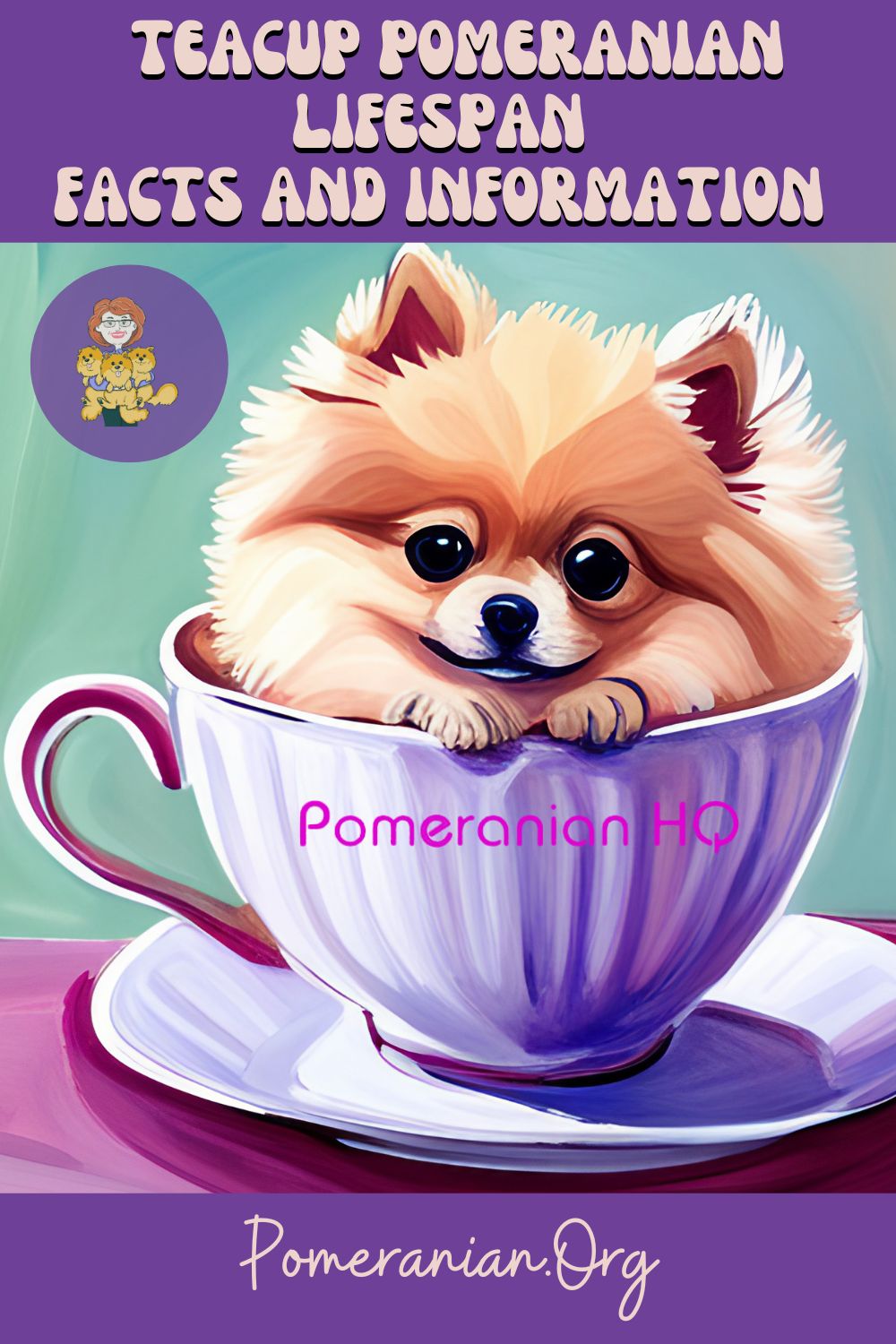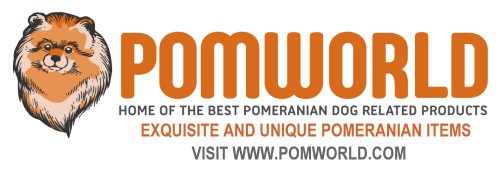Last Updated on 03/10/2023 by Dochlaggie. Post first published on October 3, 2023.
The Teacup Pomeranian is the choice of Royals and demands care and attention as a special little dog.
The average Teacup Pomeranian lifespan is between 12 and 16 years. The more you care for your cute little canine friend, the more the Teacup Pomeranian life expectancy will increase.
A Teacup Pomeranian is a cute toy breed dog. It has a double coat that is fluffy and soft to the touch. Pomeranians become excellent human friends as they love living with a family. That is why dog lovers often enquire how long a Teacup Pomeranian live?
Well, now you have the answer. There are other interesting facts about the Teacup Pomeranian lifespan that this article is going to cover. So, stay tuned and read the complete article to learn about the Teacup Pomeranian lifespan.

History of Teacup Pomeranian Dogs
Many names know the Pomeranian. Some of these are Zwergspitz, Dwarf Spitz, Loulou, and the most common Pom, a much-loved nickname. Teacup Pomeranians are the smallest members of the Spitz family. Pomeranians’ closest Spitz relatives are the larger breeds like the Samoyed, Alaskan Malamute, and Norwegian Elkhound. The Pomeranian was originally a large sled dog in the Arctic region.
Teacup Pomeranian dogs derive their name from the province of Pomerania, located in Germany. Being native to Pomerania, they are known as Pomeranian, and the unofficial term teacup refers to their small size.
Pomeranians are characteristically known for their wedge-shaped head, prick ears, almond-shaped dark eyes, and thick furry double coats. Early Pomeranians used to weigh as much as 30 pounds. These were the Pomeranians that were bred in the northern regions of Germany.
Pomeranians had the privilege to enjoy the limelight. They were the favorite pets of the famous theologian Martin Luther, artist Michelangelo, physicist Issac Newton, and Princess Sophie Charlotte, who became the Queen consort of King George III.
But the prestige and love that Queen Victoria bestowed upon this cute little dog is unmatched and uncanny. The Queen bred Poms during her lifetime. It was Queen Victoria’s love that the dog soon became famous among the British nobility.
It was in the early 1900s that the breed standard for Teacup Pomeranian was stabilized. The breeders reduced the weight, making a wider range of colors available during this period.
Pomeranians reached the United States in 1888 when the American Kennel Club (AKC) recognized it as a breed.
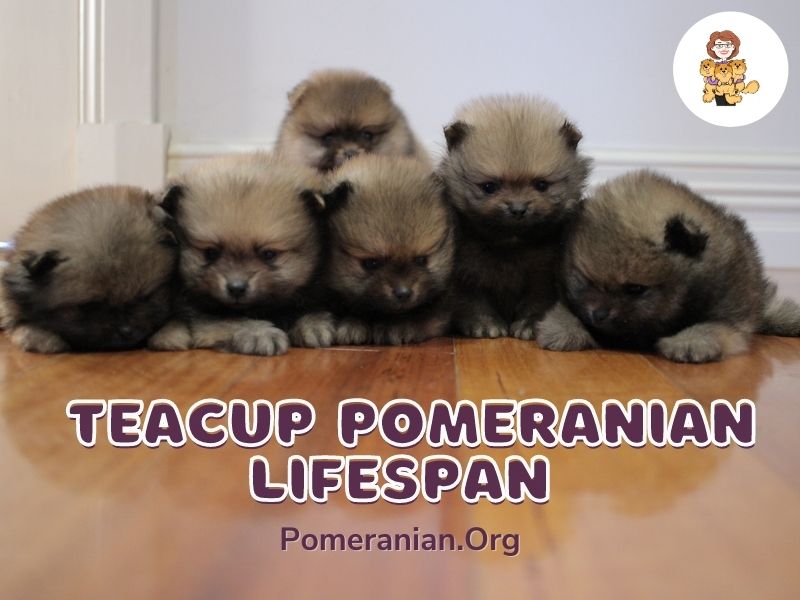
Teacup Pomeranian LifeSpan Facts
How long do Teacup Pomeranians live? It is a question that the lovers of Teacup Poms repeatedly ask. There is no simple answer to this question, but according to the American Kennel Club (AKC), the Teacup Pomeranian lifespan is between 12 and 16 years.
Teacup Pomeranian life expectancy depends on many factors. A Teacup Pomeranian lovingly raised by a human family since birth has a greater chance of living longer. A Teacup Pomeranian who is well taken care of lives a complete and healthy life.
Taking appropriate care of your dog does wonders in terms of the longevity of its life. If all the requirements of the Teacup Pomeranian are adequately met, then it will stay healthy at all stages of his life. Staying healthy increases the dog’s life expectancy.
Hence, the Teacup Pomeranian’s average lifespan depends on its life quality. A cared-for dog lives longer than one who spends its life in a shelter home. If you want to increase the life expectancy of a Teacup Pomeranian, take good care of your dog.
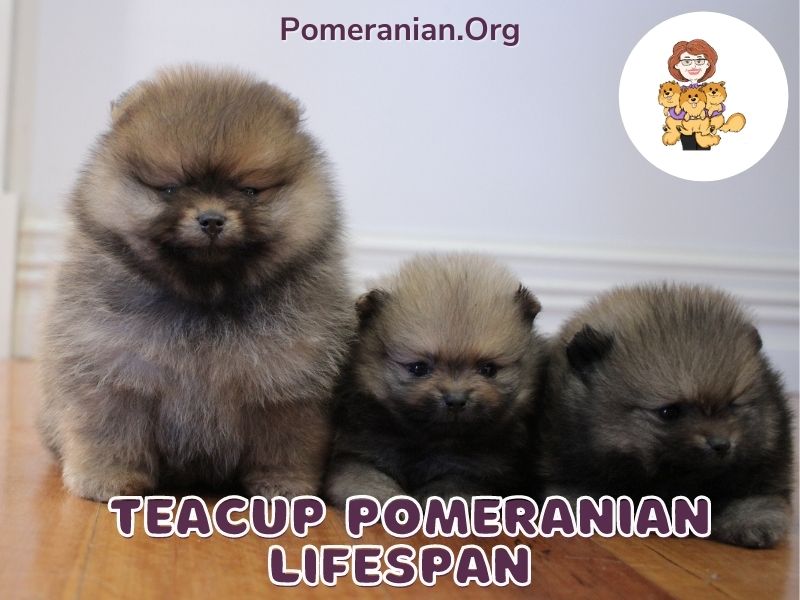
Teacup Pomeranian Health Problems
If you want your little Pom to live long, focus on health issues and a balanced diet. Tiny dogs are vulnerable to some dog diseases and genetic disorders and may have health concerns.
By making a comprehensive health plan, you can ensure your cute little canine friend does not get infected or ill. This plan should include regular visits to the vet. Get your dog a thorough checkup. If there is any problem, arrange for the proper medical care.
In this way, you can increase the Teacup Pomeranian’s life span. However, there are some diseases which you need to be aware of. The following diseases are likely to cause trouble to your Teacup Pomeranian.
● Allergies
Allergies cause much trouble to dogs. Teacup Poms are vulnerable to a variety of allergies. They are prone to food allergies that corrupt their stomach to contact allergies that irritate their skin.
Dog allergies may range in intensity from mild to really severe. If a dog catches an allergy, the symptoms are instantly visible. However, in some cases, the symptoms might take time.
Do note if your Pom dog licks his feet excessively or scratches his face. Swelling, itching, redness of the skin, redness of the eyes and the membrane of the nose, coughing, shortness of breath, and face, neck, or skin rash are the common symptoms of an allergy.
● Epilepsy
Epilepsy is a disease that is fortunately not very common in Teacup Poms. Epilepsy is a chronic condition that leads to repeated seizures. Commonly, the seizures are known as fits or funny turns. It is tragic to witness a dog in an epilepsy fit.
A seizure occurs because of abnormal electrical activity in the brain. It causes short-term behavior changes in the dog’s mood. Epilepsy seizures lead to loss of voluntary control coupled with jerks, seizures, shaking of the body, and abnormal movements.
Consult a doctor if your dog shows any signs of such a disease.
● Eye Problems
The eyes of Teacup Poms can get infected with several eye infections. The first symptom in these dogs is watery discharge from the eyes. A watery discharge or mucus buildup can be observed at the first stage.
Most of the time, it is because of the entry of a foreign particle into the eye. However, it is advised to consult your vet at this early stage and get to the root cause of the infection.
Conjunctivitis, corneal ulcer, and epiphora are the three most common dog eye infections that should be treated with care, as they can lead to partial or total blindness.
● Hip Dysplasia
A disease that is very rare in Teacup Pomeranians is hip dysplasia. This hip bone disease can occasionally occur in Teacup Pom dogs. A lot of factors may be responsible for this disease in a dog.
The single leading cause of hip dysplasia in Teacup Pomeranian is genetics. It is hereditary and is genetically transferred from one generation to the next. Improper nutrition, lack of exercise, and weak bones lead to severe symptoms.
In genetically disabled Teacup Poms, it is seen that they can live normal lives. These are small dogs; unlike large dogs, they put a little weight on the hip bones.
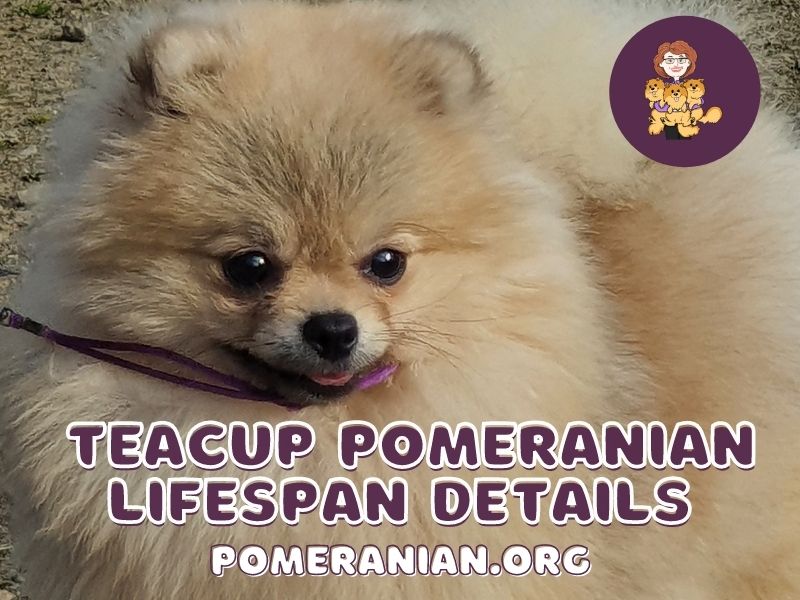
● Legg-Perthes Disease
Another disease is Legg-Perthes disease, which concerns the hip joint. In this disease, the femur bone is affected. The blood supply gets disrupted to the head of the femur bone. As a result, the joint that connects the femur to the pelvis starts to disintegrate.
Legg-Perthes is a painful joint condition. In critical cases, the hip joint may crumble and finally collapse. Unfortunately, this disease is quite common in small dogs. That is why Teacup Pomeranians are affected by this disease in large numbers.
The treatment of this disease involves removing the hip joint in an operation. If the treatment is successful, the outlook of the dog gets better. Dogs with this disease shouldn’t be bred because there are chances that this disease might be genetically transferred to the offspring.
● Patellar Luxation
The patella is kneecap, and luxation means dislocation. Hence, patellar luxation is the dislocation of the kneecap in dogs. This disease is very painful. Every knee movement carries a wave of pain throughout the leg.
The Teacup Pomeranian is unfortunate, as many have a genetic predisposition to developing this disease. This is because the point at which the kneecap is attached to the bone is weak and can be easily dislocated.
The results lead to the crippling of the dog. However, as Teacup Pomeranians are small, they can lead normal lives with this disease.
● Collapsed Trachea
This is a condition in which the trachea or windpipe collapses. The trachea is a cartilaginous c-shaped ring tube that gets air in and out of the lungs. The natural consequence of tracheal collapse is that the oxygen supply to the lungs is blocked.
Severe breathing problems start after the tracheal collapse. A harsh, dry cough is common in dogs that face this issue. The warning signs of tracheal collapse are difficulty in breathing, excessive dry coughing, vomiting, gagging, wheezing, and cyanotic episodes.
Teacup Pomeranians are prone to developing this disease. The most common cause of developing this disease is a genetic transfer from one generation to the next.
● Dental Problems
Teacup Pomeranians can develop several dental problems. One of them is bad breath. Although having bad breath is not detrimental, it points to your dog’s poor dental hygiene. Poor dental hygiene is related to many problems.
With poor dental hygiene, plaque can grow on the teeth. Bacteria and food debris corrupt the enamel and decay the teeth over time. It leads to pain and discomfort in the dogs.
Early teeth loss is another severe disease associated with Teacup Pom dogs. All the teeth problems can be avoided by taking your dog to a dog dentist or vet and caring for your dog’s dental hygiene.
● Heart Problems
Smaller dogs and Teacup dogs are not without their health conditions. A significant issue that many potential dog owners might overlook is their predisposition to heart problems. This susceptibility is partly due to their small size, which can put extra stress on their cardiovascular systems.
Among the heart-related ailments common in Teacup Pomeranians is the Patent Ductus Arteriosus (PDA), a congenital heart defect. In addition, Mitral Valve Disease (MVD) is another condition often seen as the dog ages, where the heart’s mitral valve deteriorates.
Both conditions can lead to more serious complications like congestive heart failure if left untreated. A balanced diet, routine veterinary check-ups, and regular exercise can help mitigate risks and detect early signs of cardiac issues.
Care of a Teacup Pomeranian
The Teacup Pomeranian is active, agile, and compact. It goes well for people who live in an apartment. Luckily, Teacup Pomeranians have a moderate activity requirement and can live well in small homes.
However, they do need moderate exercise daily. A very short neighborhood walk is sufficient for the Teacup Pomeranian. Some Teacup breeds can be strong, and they can enjoy long walks.
However, you must take extra care of your Pom as it is a small dog. Protect it from cars, traffic, and other things. Also, the Teacup Pomeranian is a tiny dog, and they get heated up even after a short walk. Hence, you need to take care of their hydration.
Although Poms are tiny, they must be fed at the usual time. Their nutrition requirements must be taken proper care of. Being small, the portion size for Teacup Pomeranian must be kept small.
Recommended daily food and nutrition requirements for a Teacup Pomeranian can vary from a quarter cup to half a cup. Serve them a meal that is rich in proteins. Fish, chicken, turkey, beef, or pork can be served along with fresh vegetables.
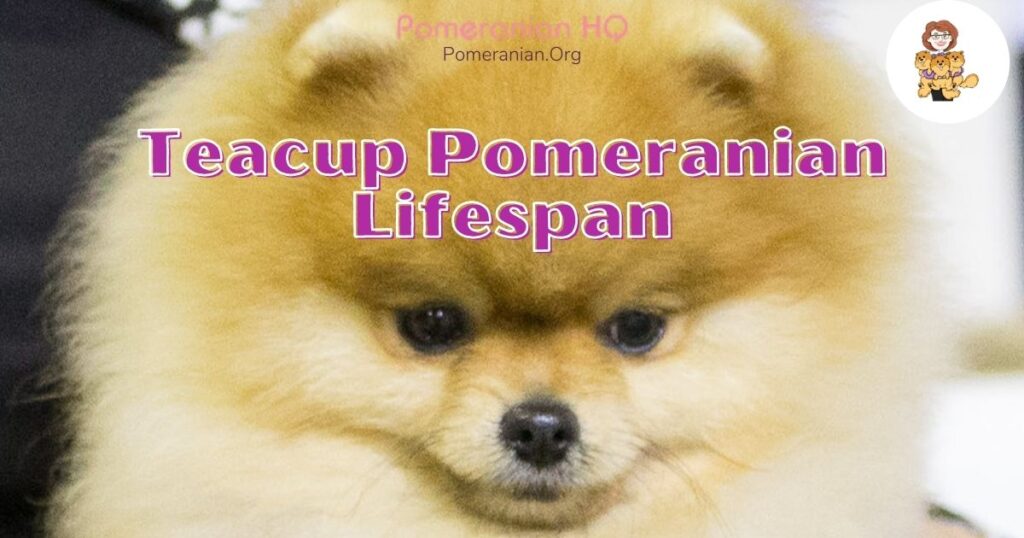
Grooming Requirements of a Teacup Pomeranian
A Teacup Pomeranian is one of those dogs that require regular grooming. If you want to improve the life expectancy of the Teacup Pomeranian, then the grooming requirements of this dog must be adhered to.
Teacup Pomeranians have a long, full double coat. The coat is furry, fluffy, and soft to the touch. The shedding level of this dog is minimal. However, Teacup Pomeranians do shed.
Brushing the coat is a weekly, if not daily, requirement. Brushing has many advantages.
First of all, brushing removes all the dust, dirt, and mud that may be there in the coat. It also removes fleas, ticks, or burrs hidden under the coat.
Secondly, brushing distributes natural oils in the coat. Brushing can be done with a slicker brush. The frequency of brushing should at least be two to three times within a week.
Brushing also has the advantage of removing the loose hair from the coat. While brushing, you can easily collect the shedding of the coat and can protect your clothes, rugs, and furniture from the shedding coat.
Start the brushing from the head of your Pom and move slowly towards the shoulders and the body. Make your dog comfortable for brushing and make brushing a pleasant experience.
The other grooming requirements include giving a bath to your dog. Once a week, thoroughly bathe and pick up all the dirt from the coat. You also need to trim the nails of your puppy.
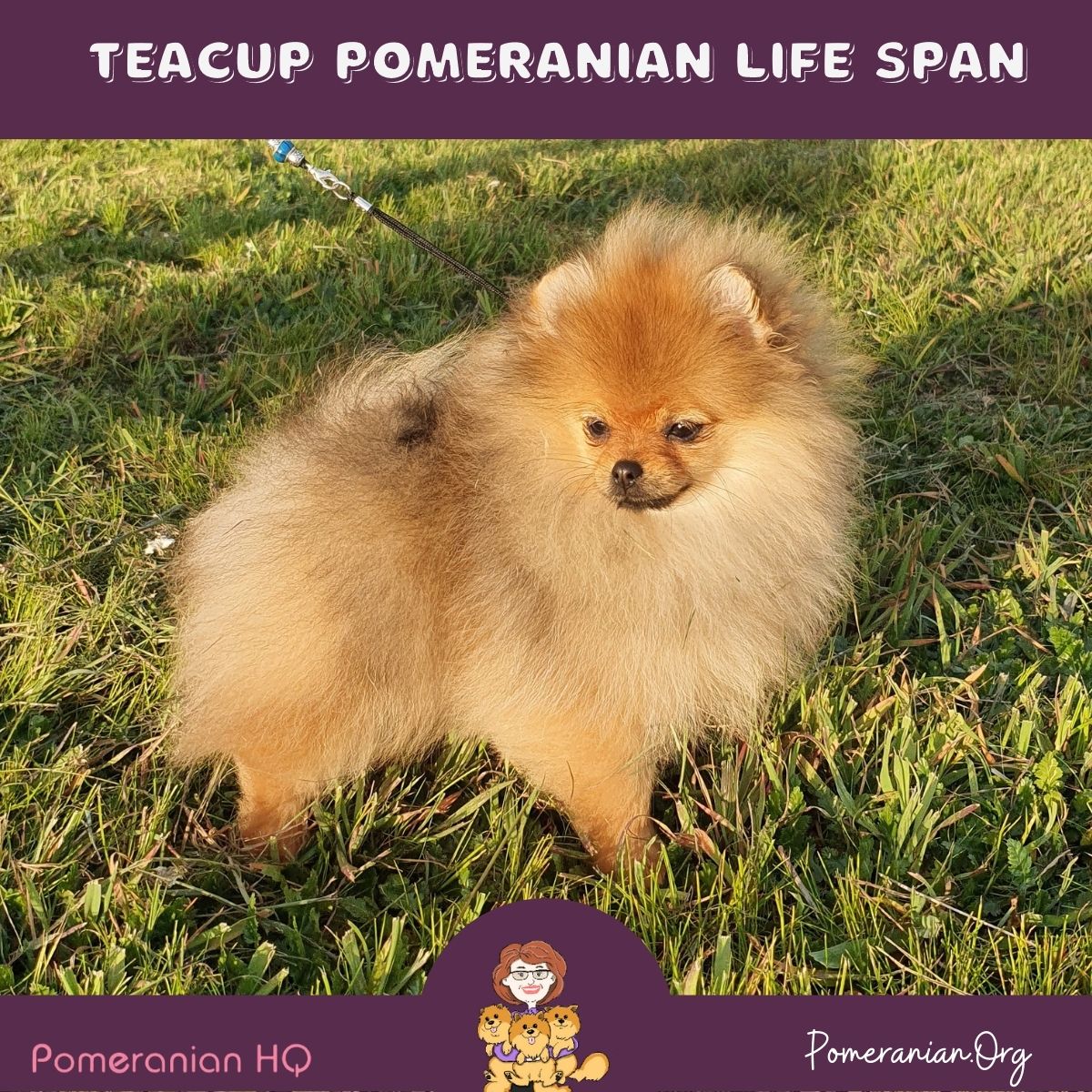
Teacup Pomeranian LifeSpan Conclusion
Take good care of your Pomeranian to increase the Teacup Pomeranian life span. There are several diseases that your tiny dog is vulnerable to. These include allergies, epilepsy, eye problems, hip dysplasia, Legg-Perthes disease, patellar luxation, collapsed trachea, and dental problems.
Make regular appointments with your dog’s vet for thorough checkups to ensure your Poms live a long life. Take care of your dog’s grooming requirements. Feed your Teacup Pomeranian well and ensure it gets the proper nutrition.
Copyright Pomeranian.org. All Rights Reserved.
References and Further Reading:
[1] Official Standard of the Pomeranian (AKC). American Kennel Club, 2011.
[2] English Kennel Club Pomeranian Breed Standard, 2017.
[3] Denise Leo, The Pomeranian Handbook.
[4] Milo G. Denlinger “The Complete Pomeranian.”
[5] Kimbering Pomeranians “1891-1991”.
[6] William Taplin’s “The Sportsman’s Cabinet.”
[7] E. Parker “The Popular Pomeranian.”
[8] Lilla Ives “Show Pomeranians.”
